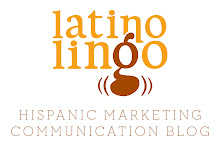Mija, done vamos for dinner?
This according to a Nation's Restaurant News story today reporting on a new study called "El Mercado Restaurante" conducted by Woelfel Research.
In my "Where do I get good Mondogo" posting about supermarket marketing on 10/21 I spoke about how food isa major part of the Hispanic culture, and I mentioned that Hispanics come from larger families (3.6 per household compared to about 2.6 for non-Hispanics to be more precise) thus we spend more.
Hold on restaurant marketers ... before you go start seasoning your food with sofrito or putting pineapple chunks on your tuna casserole and start marketing yourself as Hispanic-friendly, heed some of the key findings of the study:
1) While cleanliness, taste and value are important attributes when choosing a restaurant, Hispanics consider certain "family-oriented" attributes more important than general-market consumers. Hispanics view dining out as a family affair in which the menu variety, low prices and a friendly atmosphere for children are top-of-mind when deciding where and what to eat.
2) By a 2-to-1 margin, Hispanic respondents said coupons for a particular restaurant drove their most recent restaurant choice. We get less mail and therefore look at everything with more detail and have higher recall rates, the study said. Except for me, I get a lot of mail and remember nothing so don't send any more, please!
3) Hispanic use carryout and delivery service more often (53 percent) than general-market consumers (44 percent).
4) Respondents said they'd prefer bilingual advertising and marketing materials that are culturally relevant and address their traditions and lifestyles.

